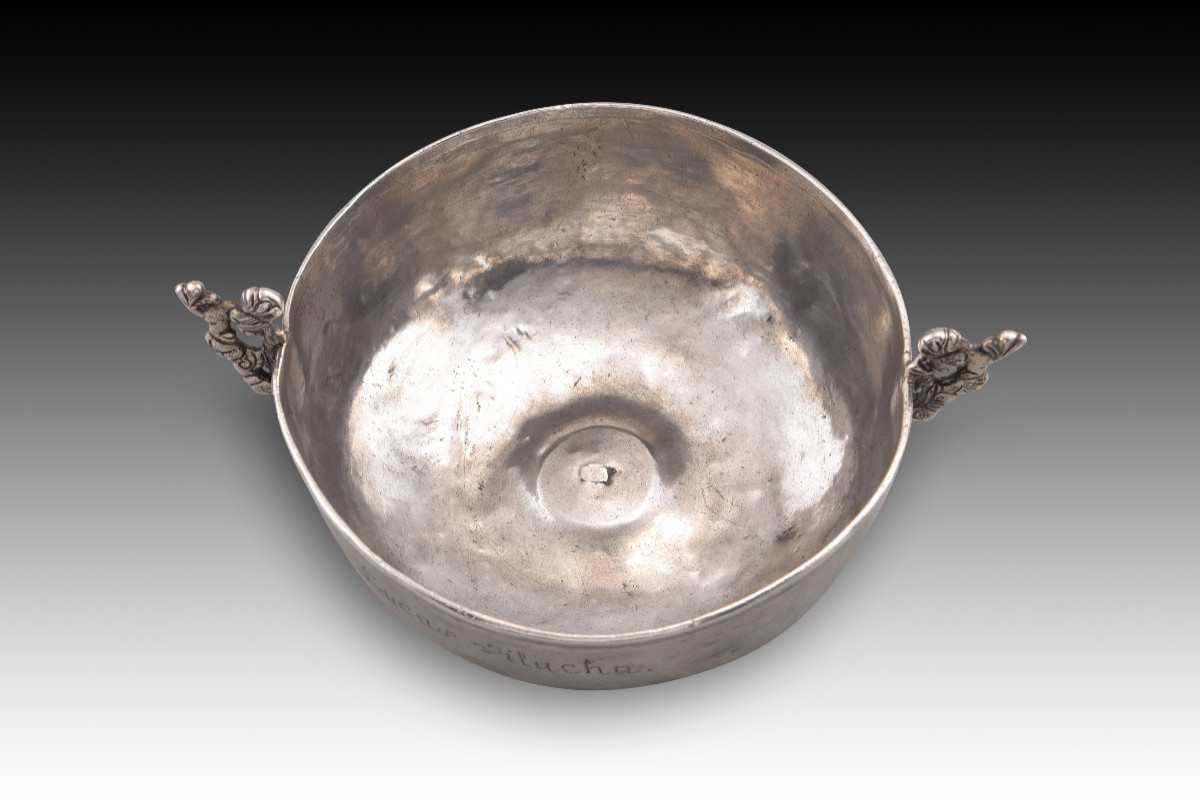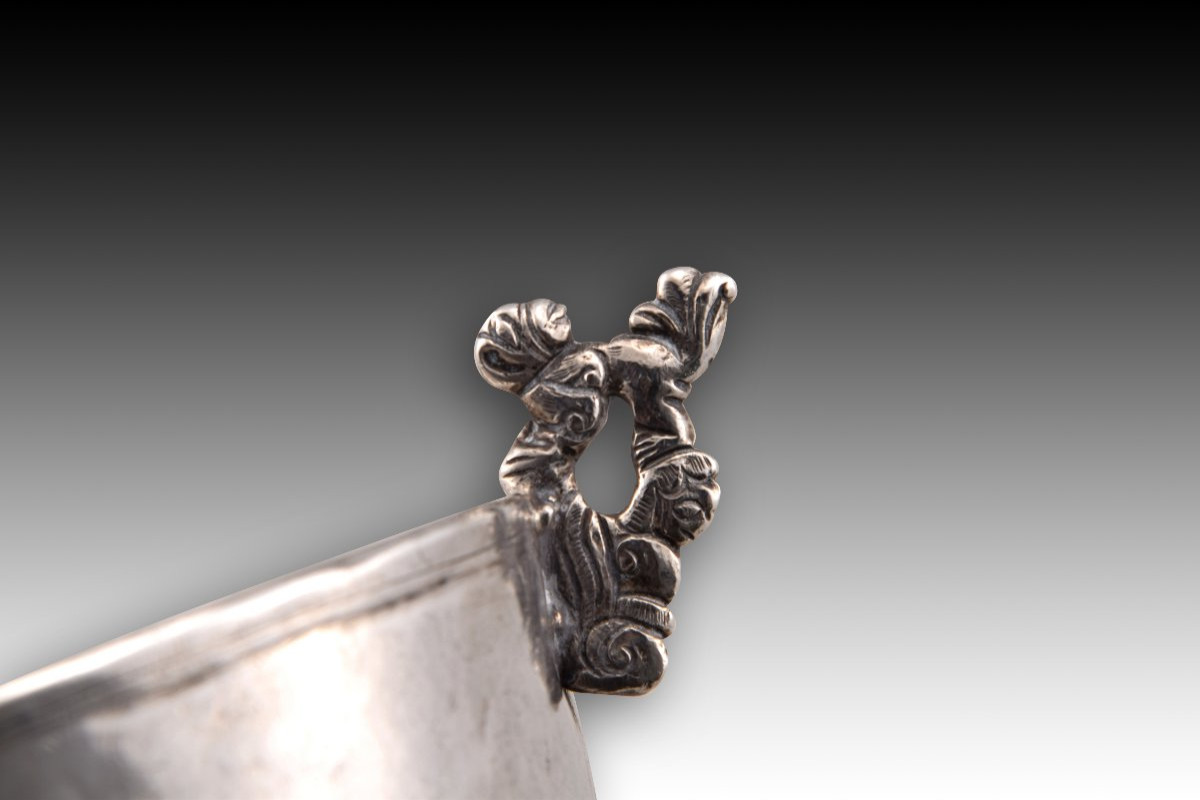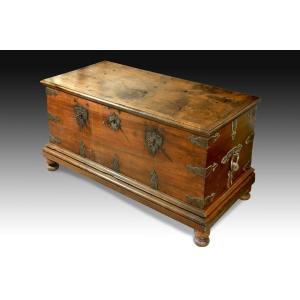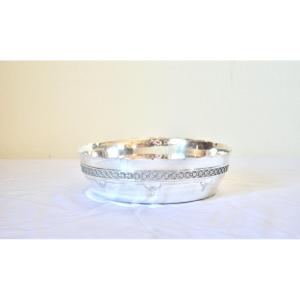Silver trinket dish with a wide circular base and a mouth of a larger diameter, a body with a thin line engraved towards the rim, and an ownership inscription on the front (Lucas Vilacha) made with small dots. It also has two handles decorated with plant elements and grotesques with human heads, and lion- or dog-like shapes are visible on the upper part. In Spanish goldsmithing, Baroque trends continued throughout almost the first two-thirds of the 18th century, except in the capital, where Rococo forms were introduced without supplanting the previous ones. It was not until 1740 that French goldsmiths introduced these innovations to Madrid, which would slowly spread to the rest of the centers, depending on the region and the masters. This survival of 17th-century forms is also reflected in the handles of the tembladera: human-headed grotesques are very present, a decorative abundance that contrasts with the clean lines of the rest of the work, but which is common in this type of work. The absence of hallmarks does not allow us to locate the work or the artist, but this is precisely what argues in favor of a secondary goldsmithing center, where the lack of control over these works was more frequent due to the lack of masters and the means to ensure compliance with the marking regulations. Bernégales and tembladeras were the most common types of goldsmithing in 17th-century Spain (although they continued to be popular in the 18th century, especially in centers far from the main centers of creation). In the case of this piece, the handles could indicate that it was made in the Americas, although there are similar pieces that would have been made in the Iberian Peninsula. It is worth mentioning that there is evidence of the baptism of a Lucas Vilachá in 1783 in Lanza (La Paz, Bolivia). Compare with works such as the tembladera by Antonio Sánchez dated between 1655 and 1689 from the convent of the Clarisas Mothers of Villacastín, others preserved in the National Museum of Decorative Arts in Madrid, etc.
Weight: 325 grams. - Dimensions: 20x15x7.6 cm










































 Le Magazine de PROANTIC
Le Magazine de PROANTIC TRÉSORS Magazine
TRÉSORS Magazine Rivista Artiquariato
Rivista Artiquariato